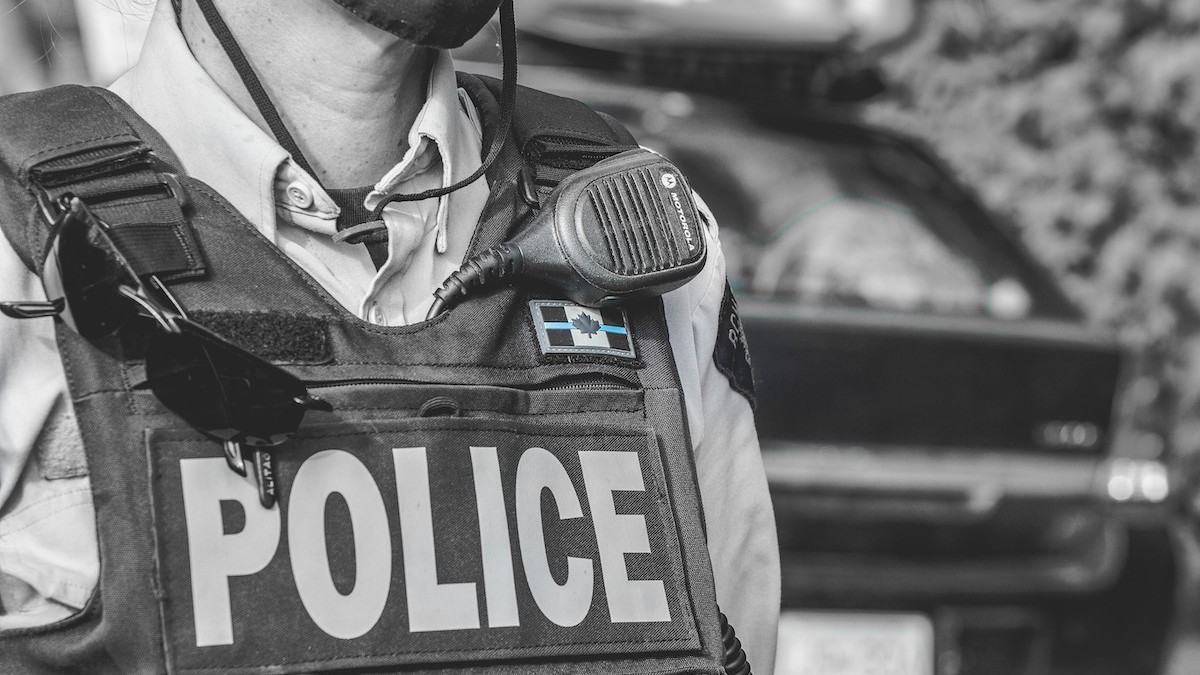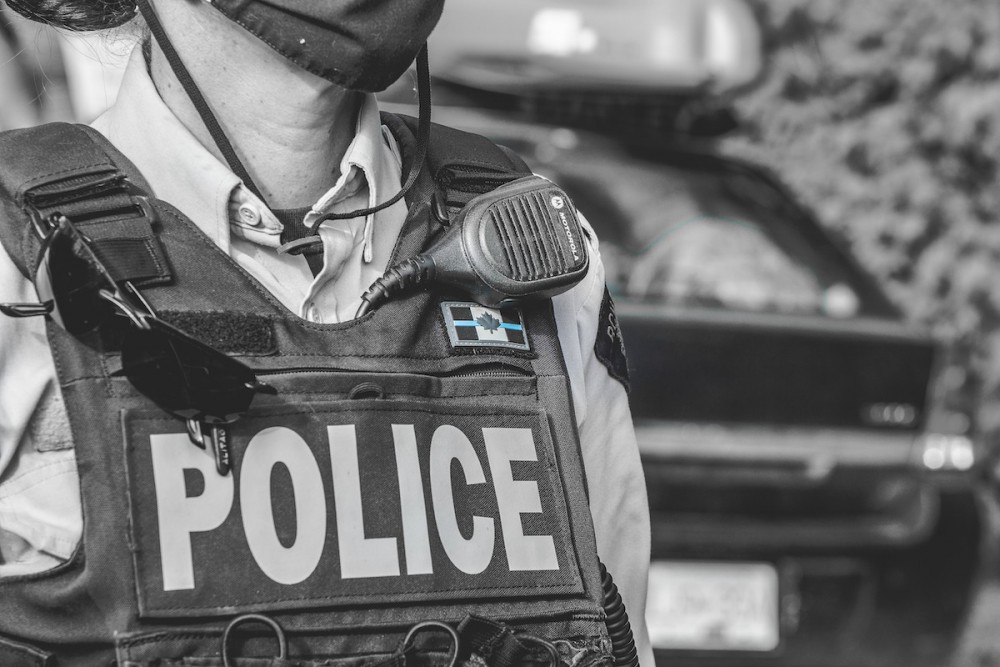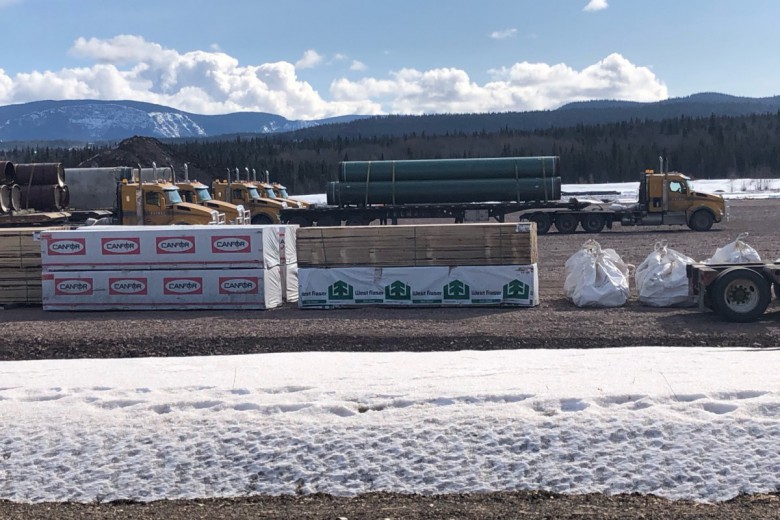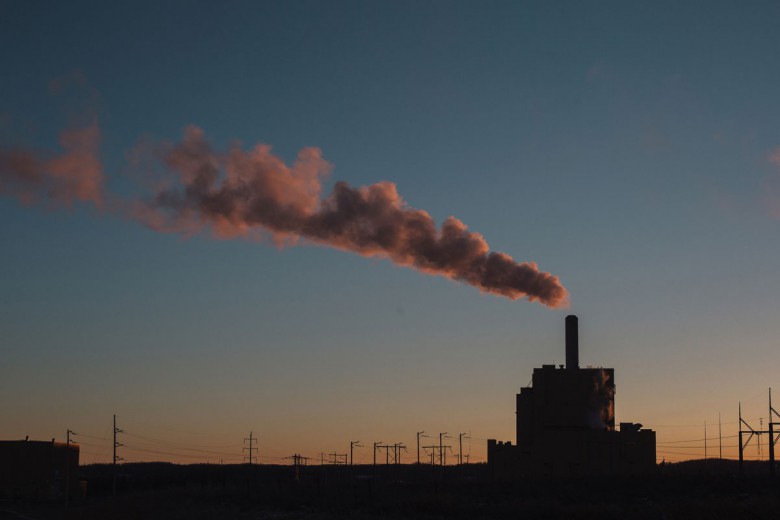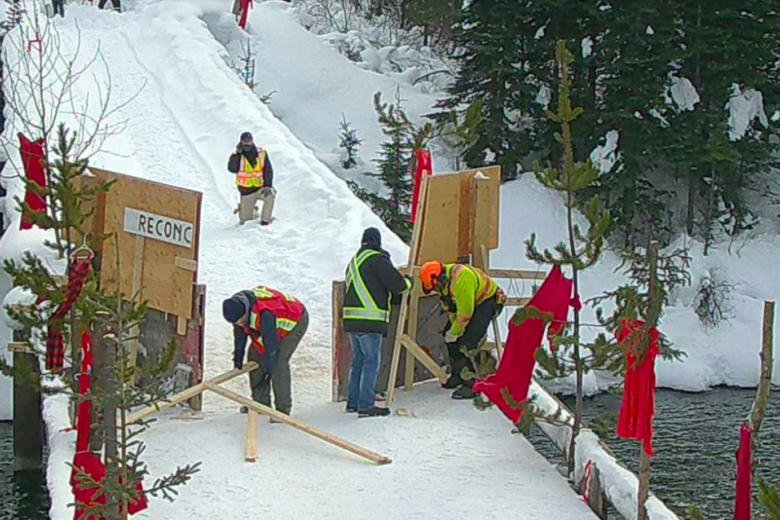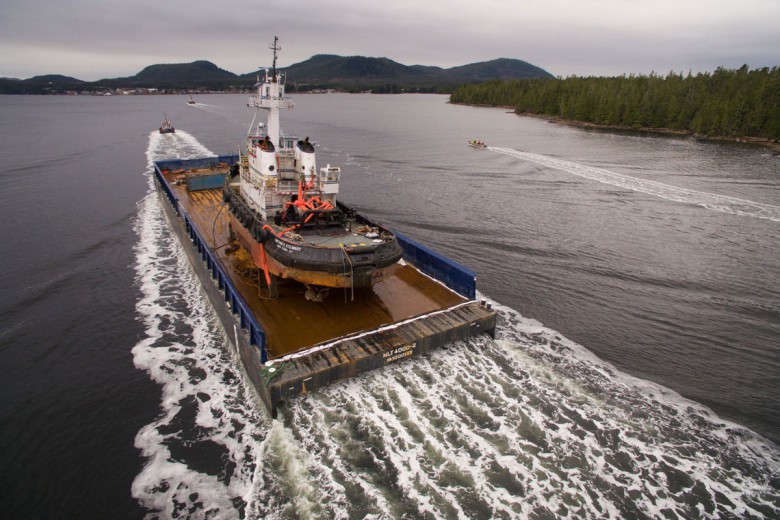On September 8, 2021 I was assaulted by several RCMP officers at the Fairy Creek blockade, located on the unsurrendered land of the Pacheedaht Nation on so-called Vancouver Island.
The officers who surrounded and attacked me had on masks that covered most of their faces, and they were not wearing name tags or badge numbers. Officers grabbed and twisted my arms while my hands were bent inward, paralyzing me with pain. They then grabbed my legs and ripped them open, pinned me down and pulled me up to carry me away. I was carried like this for a few meters, then dropped, lifted again, then slammed against the side of a police vehicle.
As a person with brown skin, I was terrified. Out of the 60 or so other peaceful protesters who were stopped by police that day, and who I spoke to, I was the only one who reported being handcuffed.
As the violence of the arrest escalated, I knew that I could not defend myself, or try and escape – I was aware of the greater repercussions of resisting arrest, of being accused of assaulting a police officer.
Despite my hands being fully immobilized, an unidentified RCMP officer continued to push my arms painfully high up behind my back. The pain was so overwhelming that I could not register what was happening around me. Once the assault began, my memory of the events is full of flashes, not a fluid sequence.
At no point during the arrest did I resist or retaliate in any way. As the violence of the arrest escalated, I knew that I could not defend myself, or try and escape – I was aware of the greater repercussions of resisting arrest, of being accused of assaulting a police officer. The members of the media who were present that day were pushed 30 meters away and unable to closely record the events of that morning.
At that moment, I faced what Indigenous people, Black people and people of colour have been facing since European colonization and the establishment of the RCMP.
At the time of my arrest, I was sitting on a road along with around 60 fellow forest defenders, attempting to peacefully prevent the RCMP from escorting logging equipment and personnel up to decimate one of the last stands of ancient temperate rainforest on Vancouver Island. The forest defenders at Fairy Creek are trying to stop Teal Cedar Products from clearcutting the island's remaining old growth cedar and fir – massive trees up to 2,000 years old that bind together a fragile ecosystem, sequester carbon, and are of tremendous spiritual importance to the Indigenous Peoples of the Pacific Northwest. Teal Cedar was first awarded an injunction in April 2021, which defenders have been defying ever since. There have been over 1,000 people arrested, mostly for breaching the injunction.
What I and my fellow forest defenders had undergone was part of the RCMP’s raison d’être. The RCMP began as a paramilitary force designed to remove Indigenous people from their land so Canada could redistribute it to settlers. Today Canadian police, with the backing of the Canadian state and its laws, protect the profit-hungry resource extraction industry by intimidating and assaulting those trying to defend Indigenous land.
In recent years, however, the RCMP's violent interference in Indigenous-led land and water defence has taken on a new, more aggressive, and more insidious form: the Community-Industry Response Group (C-IRG). This is a specially trained section of the RCMP responsible for intervening in conflicts between local communities and the energy industry in British Columbia.
I wondered: which officers are part of C-IRG? Who are they accountable to? And what situations are they deployed for?
I heard from people who had protested the Coastal GasLink pipeline up in Wet’suwet’en territory that we were dealing with a specialized segment of the RCMP called the C-IRG; that they were enforcing the injunctions awarded to both Coastal GasLink and Teal Cedar, making them responsible for my arrest. But I didn’t know much else about the police group. I wondered: which officers are part of C-IRG? Who are they accountable to? And what situations are they deployed for?
When I googled “C-IRG,” there were only six short sentences on the RCMP’s website. And so I sought answers. With support from Research for the Front Lines, a group of researchers offering their skills to aid grassroots fights for environmental justice, I’ve been making phone calls, conducting interviews, and submitting Access to Information requests. This article, and a more in-depth one which will be published in the January issue of Briarpatch, shares some of what we’ve been learning about this secretive arm of the RCMP in B.C.
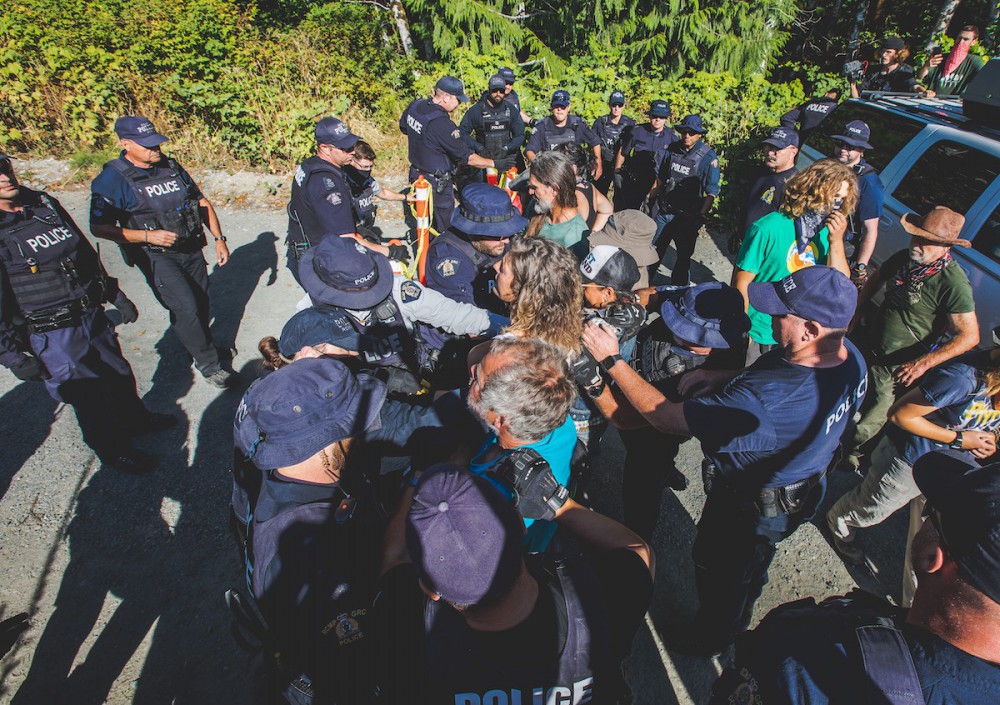
No badges, no faces, no accountability
The C-IRG was formed in 2017 “to provide strategic oversight addressing energy industry incidents and related public order, national security and crime issues,” according to the RCMP’s website. There’s been very little else written about the group, but in 2019 the Guardian got ahold of police documents that showed RCMP commanders were prepared to shoot the Indigenous land defenders protecting Wet’suwet’en territory from the Coastal GasLink pipeline. That story noted that C-IRG officers were not only policing Wet’suwet’en land defenders, but had also recently arrested Kanahus Manuel and Isha Jules of the Tiny House Warriors, who are blockading the expansion of the Trans Mountain tar sands pipeline on Secwepemc territory.
In an interview with Research for the Front Lines, C-IRG commander John Brewer explained the C-IRG’s command structure, and how officers are recruited.
He said the C-IRG uses a “gold silver bronze” command structure, which “dates back to […] the Olympics in 2010.” That year, Indigenous and allied protestors converged on Vancouver in opposition to a Winter Olympics held on stolen Indigenous land amid crises of homelessness and environmental destruction. They were met with “a consortium of local police, RCMP, the Canadian military and other agencies,” CBC reported, and seven people were arrested.
“They come [from] across the board in policing,” he said, “whether they're uniform, traffic, plainclothes, doesn't matter. They all come in and perform in the C-IRG function.”
Brewer explained the system: “I'm the gold commander, which means I have strategic oversight and command of the Community-Industry Response Group. So basically, my job there is to ensure that we are compliant with policy, health and safety laws, charters, all that. And then I make sure that we have the resourcing, that equipment, and the strategies in place to ensure the job is done using the measured approach and the minimal amount of force necessary if required."
Silver commanders are responsible for the operational side: “They will determine the plan on how we're going to execute and where,” Brewer said. Bronze commanders may be responsible for either a geographic area like Fairy Creek, or different policing functions like investigations, aerial extraction, and liaising with community members.
Brewer said those in the C-IRG are RCMP officers who are temporarily reassigned from their regular duties. Some are specially selected to join C-IRG based on their skills. “They come [from] across the board in policing,” he said, “whether they're uniform, traffic, plainclothes, doesn't matter. They all come in and perform in the C-IRG function.”
Brewer also confirmed that he ordered his officers to remove their name tags and police badges during the Fairy Creek protests. At one point in the interview Brewer denied that officers were trying to hide their identities: “The misnomer of ‘We're not wearing a name tag, so we're trying to hide ourselves’ – that's not the case at all.” But then, in direct contradiction to that statement, he explained that officers did want to avoid identification:
“We had a number of incidents, not just at Fairy Creek. This has happened in the past, myself included, where you know, we had – again, everybody's on social media and police officers, when it comes to their personal life and family life, they have a right to some privacy here and they don't need to be attacked or stalked, or that used against them.”
In other words, the C-IRG and its officers are afraid their actions will be seen as inappropriate, falling outside of what most of the public would consider proper police conduct.
In a decision not to renew Teal Cedar's injunction, Justice Douglas Thompson unequivocally condemned the C-IRG’s anonymity, writing that “The directive to remove name and number identification from uniforms was made because of concerns that police officers or their families might be harassed on social media. The same theoretical concern exists for every police officer on the street – and for every lawyer or judge that appears in court on this case or any other. The same goes for nearly everyone else that is granted authority. We identify ourselves. Accountability requires it.”
In other words, the C-IRG and its officers are afraid their actions will be seen as inappropriate, falling outside of what most of the public would consider proper police conduct.
Because of Brewer’s directive, there was no way that I or any of my fellow forest defenders could have identified the officers who assaulted us in order to file a complaint about police misconduct and the use of excessive force. A number of officers were, however, wearing thin blue line patches – the white supremacist symbol that represents police as the “thin line” between order and chaos, and that was banned by the RCMP last year.
While it’s telling and alarming that officers were told to remove their badges, even if we had known their names and filed a complaint, police are rarely held accountable for their violent actions. A CBC investigation found that between 2000 and 2018, 461 people died in encounters with Canadian police, and only two officers were convicted of any charges. Experts have called the RCMP’s oversight “a broken system across the board,” criticizing the fact that complaints against RCMP officers are investigated by the RCMP itself. If the RCMP is ever accountable, it’s primarily to the Canadian state and corporations.
The costs of policing the climate crisis
According to documents that Wet’suwet’en land defenders obtained through an Access to Information request, and which were shared with Research for the Front Lines, the RCMP spent $18,956,136 between 2018 and 2021 enforcing Coastal GasLink’s injunction against the land defenders.
Brewer explained that the C-IRG also has been deployed against those protesting a number of other resource extraction projects in B.C.: “I have strategic oversight for the entire group, which includes Fairy Creek, Trans Mountain pipeline, Coastal GasLink, we've done fish farms, Site C [hydroelectric dam], like all these different groups,” he said. It will come as a surprise to many Canadians that we, as taxpayers, are funding the violent repression of the very people who are standing up for the lands, the waters, and the climate itself.
In the eyes of many Indigenous land and water defenders like the Secwepemc and Wet’suwet’en, who are protecting lands that were never surrendered to the Canadian state, the RCMP is a foreign military force imposing laws that they never consented to.
“I have strategic oversight for the entire group, which includes Fairy Creek, Trans Mountain pipeline, Coastal GasLink, we've done fish farms, Site C [hydroelectric dam], like all these different groups.”
I spoke with Sleydo’, also known as Molly Wickham, the spokesperson for the Gidimt’en checkpoint, where members of the Gidimt’en clan of the Wet’suwet’en Nation have been restricting Coastal GasLink’s access to part of their territory since 2018.
The C-IRG’s role on her territory “is to patrol and to collect information and to harass and intimidate Indigenous people on their own land,” she explained. “We've had Elders that have come out and gone berry picking and have been surveilled the entire time. Police show up any time we're out on the territory engaging in our cultural activities. This has prevented us from actually doing that in certain parts of the territory because we don't want to be harassed and surveilled."
Harsha Walia, the former executive director of the B.C. Civil Liberties Association, which recently sued the RCMP commissioner over claims that the force refuses to respond to civilian complaints for years at a time, explained to me that the RCMP and C-IRG are in direct conflict with Indigenous sovereignty. “C-IRG in particular is an arm of policing whose entire mandate is to protect state and capital interests in resource and energy sectors by criminalizing Indigenous land defenders,” she said. “There is no clearer example of the seamless nexus between corporations, the government, and the police.”
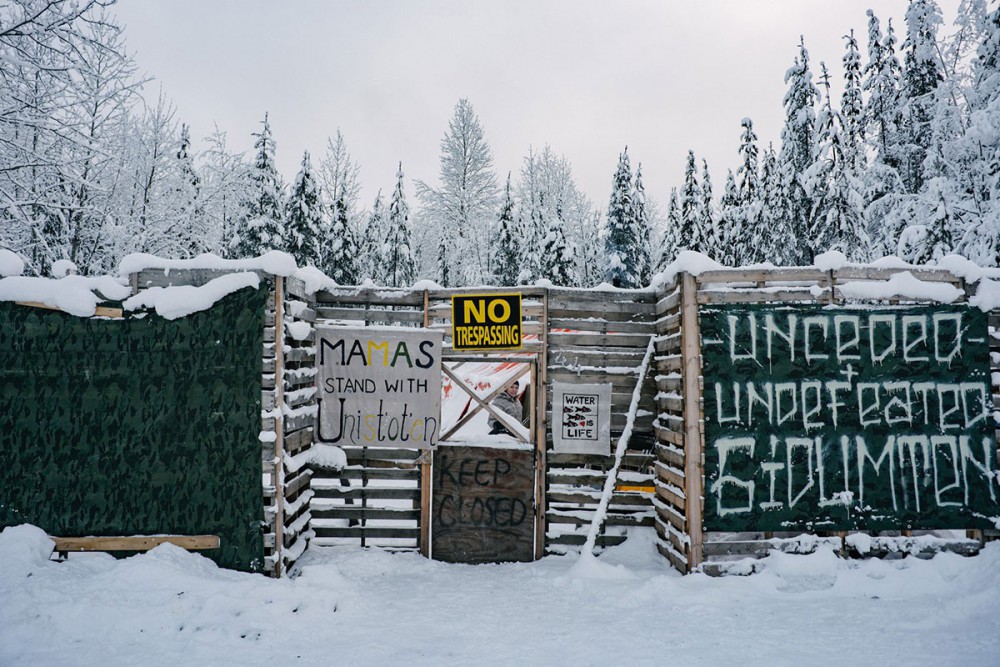
Defund the police to protect life on Earth
In the past, white settler environmentalists have fought against the destruction of the natural environment while ignoring or sometimes even opposing Indigenous land stewardship – think of Greenpeace’s historic campaign against the commercial seal hunt, which vilified the Inuit communities who rely on sustainably harvesting seals. In recent years we have seen a shift, with some groups acknowledging that the fight for Indigenous sovereignty and Land Back is the fight for the survival of all life on Earth.
All the lands that Indigenous Peoples are protecting – from the native prairie in Saskatchewan to the old growth forests at Fairy Creek to the Amazon rainforest in Brazil – play a critical role in absorbing and storing carbon dioxide, making them a vital part of achieving our national and international climate goals. In the same way, Indigenous blockades of mines, pipelines, and logging help us avert our greenhouse gas emissions at the scale required to avoid climate breakdown.
“There is no clearer example of the seamless nexus between corporations, the government, and the police.”
Indeed, a new report from the Indigenous Environmental Network and Oil Change International found that "Indigenous resistance has stopped or delayed greenhouse gas pollution equivalent to at least one-quarter of annual U.S. and Canadian emissions."
But as we’ve seen at Fairy Creek, one of the main barriers to Indigenous land defense is the police, who brutalize protesters in the name of protecting companies’ profits. Environmentalists need to connect the dots between the climate crisis and the policing of land defense – and begin fighting to defund and dismantle policing organizations like the C-IRG.
Without police enforcement and the injunction system, many of these fossil fuel extraction and transportation projects, dams, mines, and old-growth logging projects would simply not happen. What we have in Canada is a government-sanctioned, unaccountable armed force dedicated to enforcing climate collapse. With a portion of each and every Canadian tax dollar, the Canadian government has been bankrolling climate disaster, as well as the continued genocide of Indigenous communities.
This week, as delegates from around the world head to the United Nations’ COP26 conference in Glasgow to discuss strategies for slowing climate change, we offer our own demand: defund and dismantle the C-IRG. All life on Earth, including our own, depends on it.


